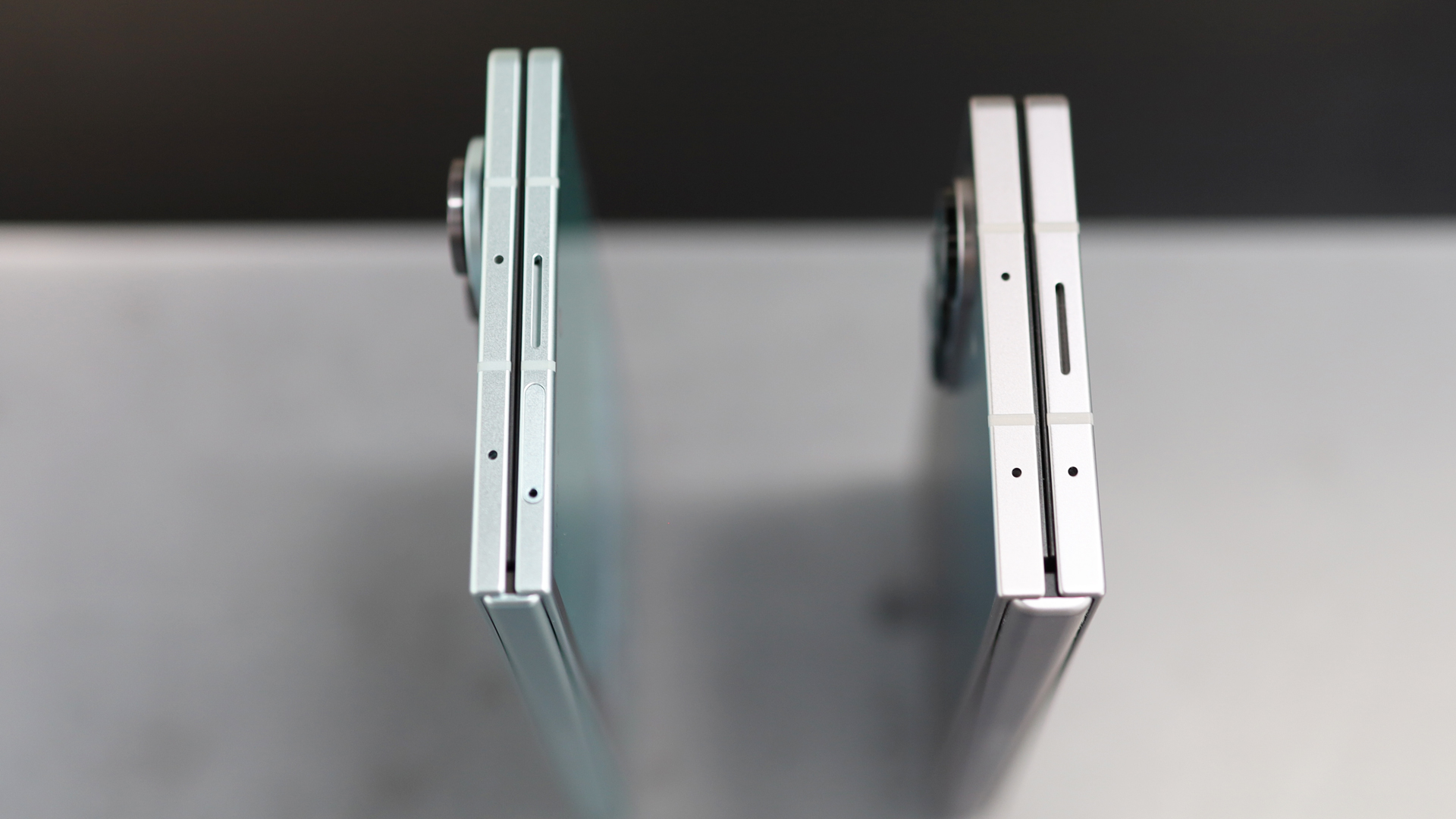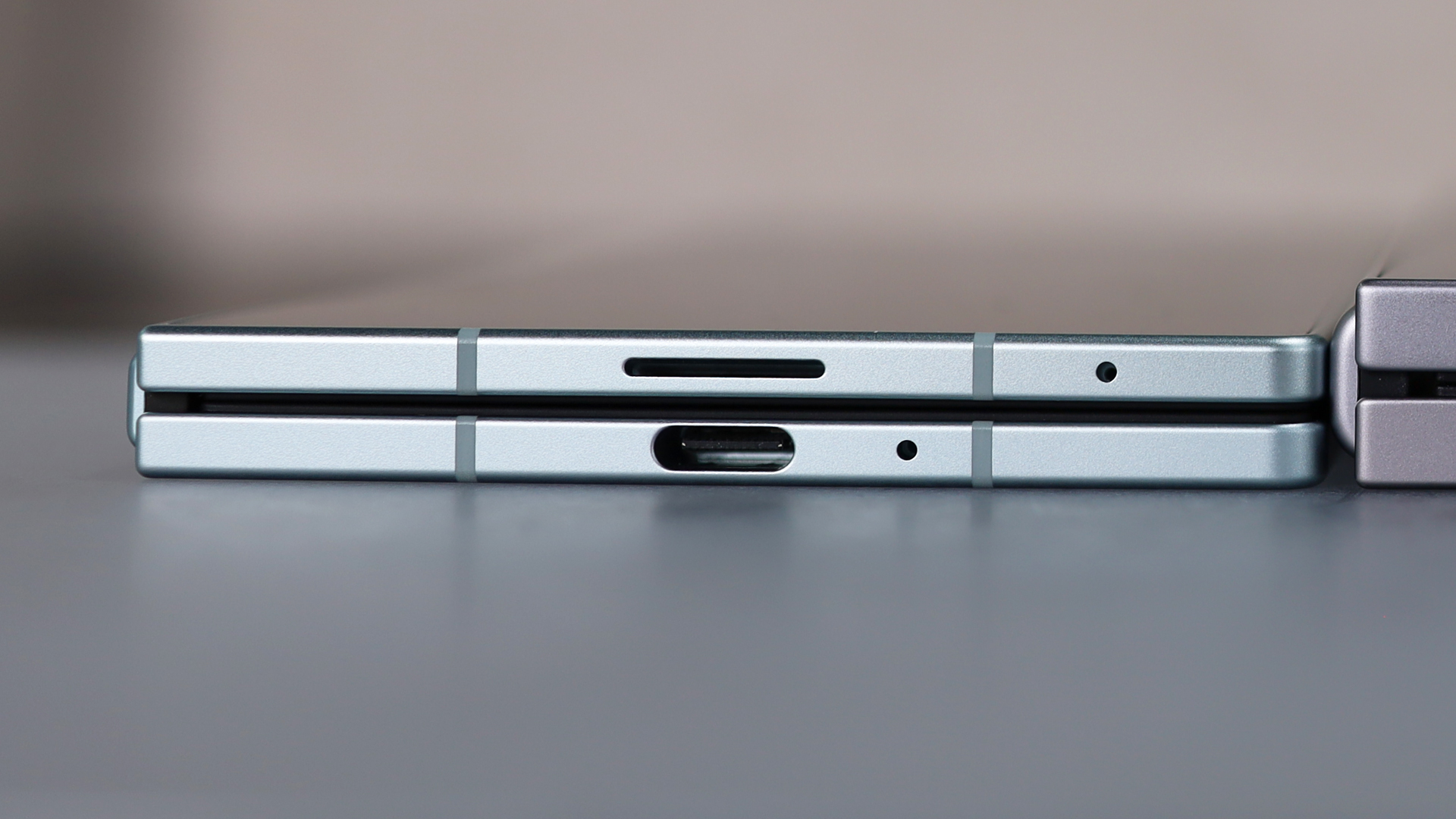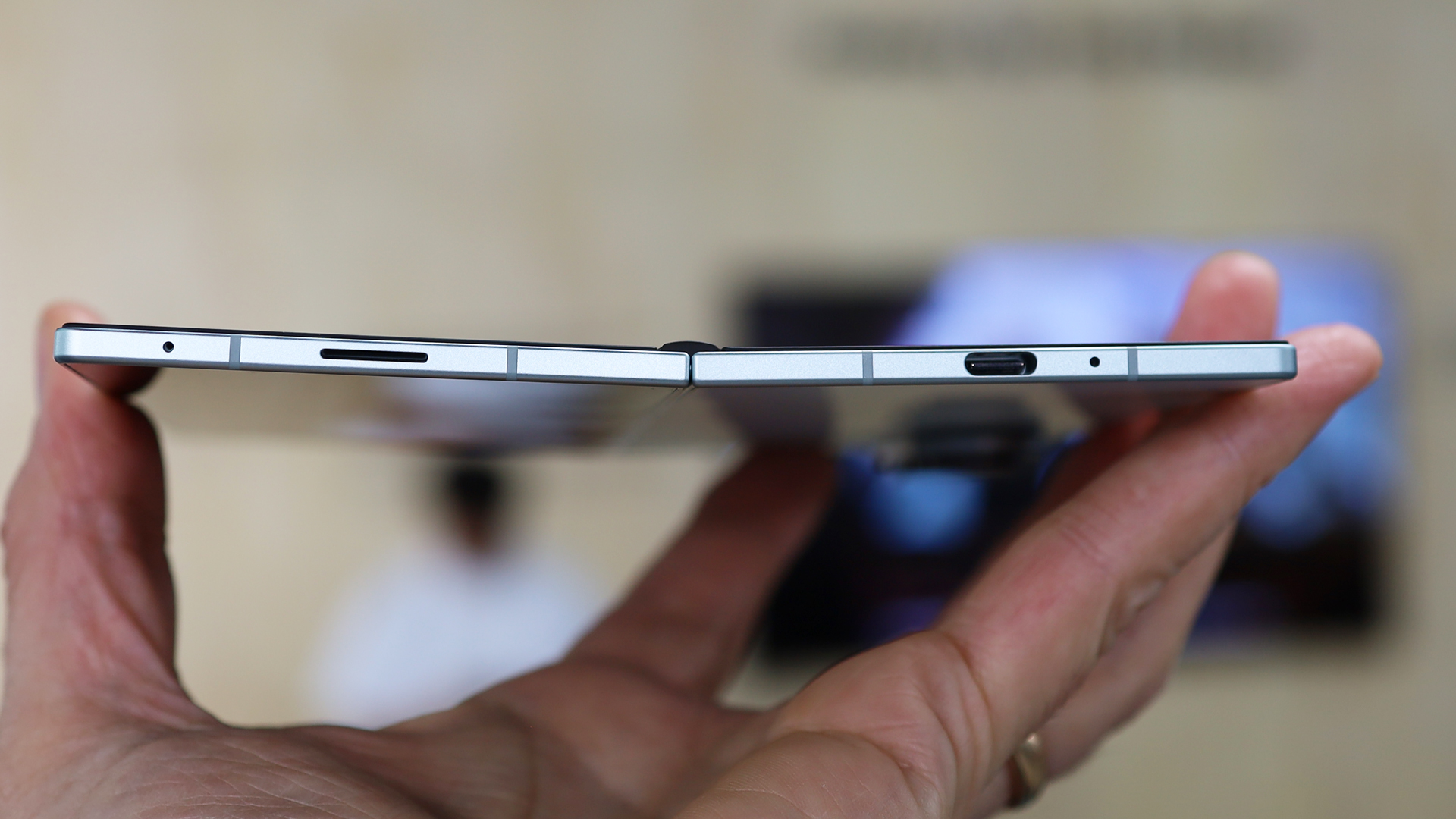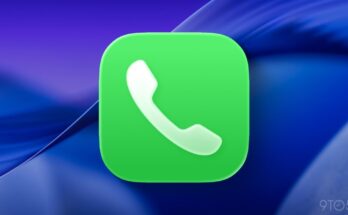Samsung unveiled the new Galaxy Z Fold 7, Galaxy Z Flip 7, and Galaxy Z Flip 7 FE at its latest Galaxy Unpacked showcase this week, and while all three phones bring a host of welcome improvements, the Fold 7, in particular, represents a major step forward for Samsung’s folding phone lineup.
Put simply, the Fold 7 is the thinnest, lightest, and most stylish Samsung foldable phone yet, measuring just 4.2mm when unfolded and 8.9mm when folded. In Samsung terms, it’s not just an upgrade – it’s a seismic needle-mover.
The latter measurement is particularly impressive, as it means the Z Fold 7 is 3.2mm (or 24%) thinner than the Galaxy Z Fold 6, and the same thickness as the flagship Galaxy S25 Ultra. Of course, with the Fold 7, you get a larger 8-inch display to play with.
It’s clear, then, that Samsung’s latest foldable is a great feat of engineering, but how did the company achieve such a dramatic reduction in thickness? What does the Fold 7 mean for future folding phones? Why was support for the S Pen removed? And, crucially, how did Samsung achieve an almost invisible crease in this year’s model?
To find out, I sat down with Blake Geiser, the SVP of Smartphone Product Management at Samsung North America, ahead of Galaxy Unpacked in New York (some answers have been edited for grammar).
A serious de-crease in thickness
The Galaxy Z Fold 7 marks Samsung’s entry into a growing sub-category of folding phones, joining the Oppo Find N5 and Honor Magic V5 as a dual-screened device that’s as thin as a regular phone when folded.
To ensure that users wouldn’t have to accept the same thickness trade-off as has been demanded by Samsung’s previous folding phones, Samsung approached the Galaxy Z Fold 7 differently.
Blake revealed that the company’s “first goal was to build an extremely high-performing bar phone”. To do that, it had to “ensure that the [Fold 7’s] thickness was in line with bar phones like the Galaxy S25 Ultra, and that it had the camera of the S25 Ultra, but then it unfolded.”
To be in line with most of the best phones on the market, the Fold 7 had to measure around 9mm thick when folded, and in achieving this feat, Samsung was also able to address another key concern with its past devices: the display crease.
Even though the Fold 7’s screen is much thinner, we’ve actually made the radius of the screen wider.
Blake Geiser, Samsung
All folding phones have some form of a crease, even though they vary in scale and usability, but the Galaxy Z Fold 7 has one of the best so far. Yes, you can still see it under the right lighting, but you can barely feel it when running your finger between the phone’s two displays. To make it so, Samsung had to make several adjustments to the Fold 7’s design:
“Folding phones are not easy to make,” Blake explained, “[as evidenced by the fact] that not everyone is making them. Now, even though the Fold 7’s screen is much thinner, we’ve actually made the radius of the screen wider, so you can think of it as a teardrop instead of a ‘U’.”
Many companies use teardrop-style hinges in their foldables, but the Fold 7 also features a unique blend of display layers that make its hinge look and feel considerably nicer than that of previous models.
“Not only do we have that teardrop hinge,” Blake continued, “but the bottom layer of that screen is actually a very, very thin titanium sheet, and the center bar where the crease is has a carbon fiber layer. When you open it up, the center bar actually pushes the crease up to minimize what you see in the crease and to maximize durability.”
Blake further expanded on this upgrade by revealing that the carbon fiber layer is designed to support the area under the crease, minimizing the effect of long-term folds on the display and the crease.
The big S Pen question
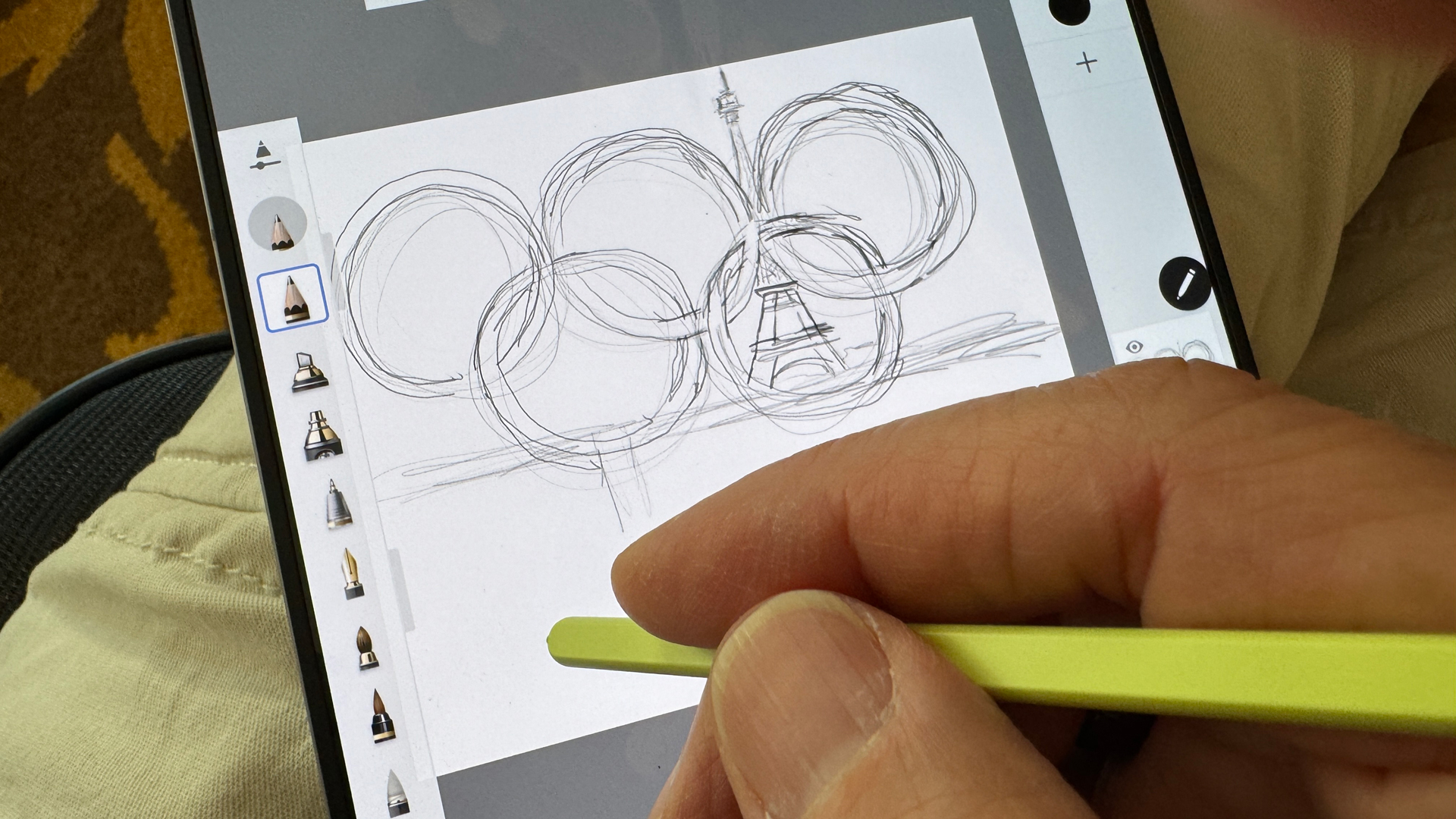
Building something as thin and lightweight as the Galaxy Z Fold 7 meant Samsung had to make certain choices and compromises for the overall product, and one notable feature omission is the absence of S Pen support.
Three years ago, Samsung added a digitizer layer to enable S Pen support on the Galaxy Z Fold 4, but the company decided to remove the same layer on the Fold 7, meaning there’s no such accessory compatibility on its newest foldable.
Why? Blake explained that there were two reasons: one related to hardware, and the other commercial: “By removing the digitizer layer, we were able to reinforce other areas of the screen for durability,” he explained.
“We had S-Pen compatibility on previous Folds, but [we] really listened to our users, and they wanted something really sleek; they wanted an updated aspect ratio with an even bigger screen and a battery that lasts for days.”
The lack of S Pen support on the Fold 7 is sure to be a sticking point with Samsung fans, not least because rival phones like the Oppo Find N5 are equally thin and support a stylus on both displays.
We had S-Pen compatibility on previous Folds, but our users wanted something really sleek.
Blake Geiser, Samsung
Earlier this year, Samsung also revealed, in an exclusive interview with TechRadar, that it still believes the S Pen is “key to the Ultra experience” (“I don’t see a space where the S Pen is not a key part of our portfolio,” Samsung’s UK marketing chief told us), which is slightly at odds with the company’s attempt to push the Fold 7 as an Ultra-level product.
Still, if Samsung needed to jettison the digitizer layer to deliver on its thickness ambitions with the Fold 7, perhaps the company’s foldable fans will forgive the decision.
A worthwhile update that’s long overdue?

I’ve used the Galaxy Z Fold 7 for the past 36 hours, and so far, it has mostly lived up to Samsung’s ambitions of creating a regular-sized folding phone.
For some users, the lack of S Pen support may be disappointing, but in my view, it’s a worthwhile trade-off. I used the official S Pen case with the Galaxy Z Fold 6 for almost a year, and I can’t remember using the S Pen on more than a handful of occasions.
So, yes, the Galaxy Z Fold 7 is shaping up to be Samsung’s best foldable phone to date. While it’s certainly an exercise in balancing different objectives, it’ll likely prove to be worth the wait for most buyers. Stay tuned to TechRadar for our full review in the coming days.


